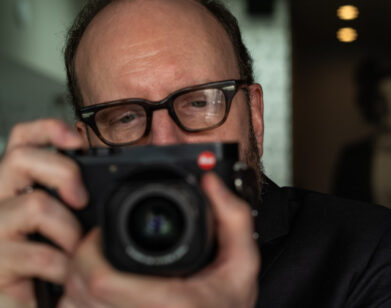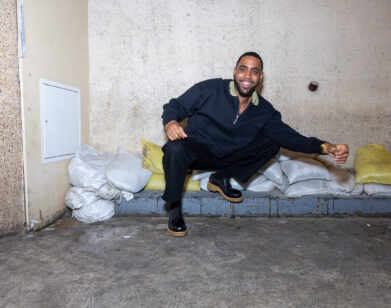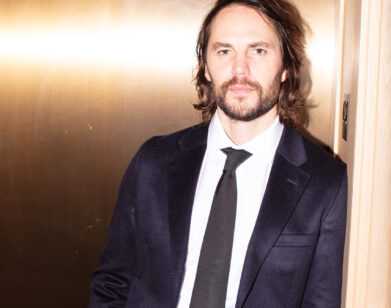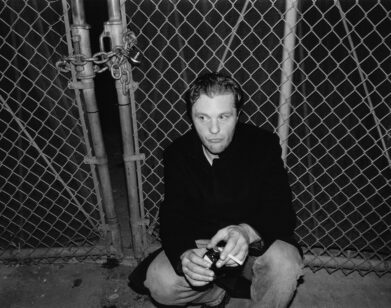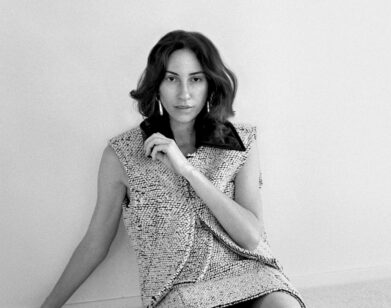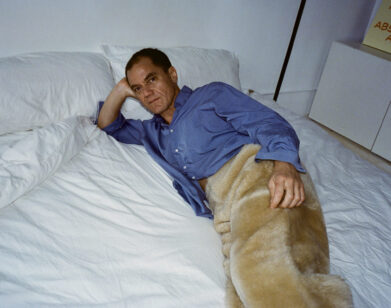How Benh Zeitlin Created the Southern Wild
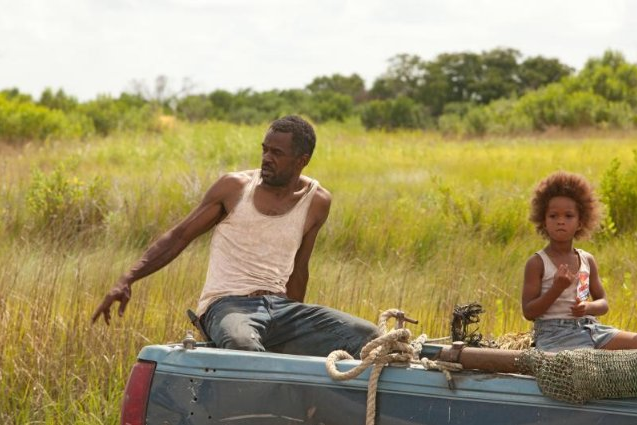
ABOVE: DWIGHT HENRY (LEFT) AND QUVENZHANÉ WALLIS IN BEASTS OF THE SOUTHERN WILD. IMAGE COURTESY OF FOX SEARCHLIGHT
Few films this year have been as rapturously received as Sundance Grand Jury Prize winner Beasts of the Southern Wild. Set in a mythical Louisiana bayou called the “Bathtub,” the film follows six-year-old Hushpuppy and her father Wink (played by first time actors Quvenzhané Wallis and Dwight Henry, respectively) as they navigate the surreally beautiful and harsh landscape they call home. Directed by Benh Zeitlin, the film is an epic shot on a shoestring budget with physical sets that were actually submerged in water rather than being created via CGI. But it’s the film’s pint-sized heroine Hushpuppy who ends up stealing the show. Played by the preternaturally talented and magnetic Quvenzhané Wallis, Hushpuppy is a strong-minded and stubborn ball of energy determined to both solve the mysteries of the universe and find her long-lost mother. It’s by seeing the world through her eyes that Zeitlin manages to give the film its mythic quality. We caught up with Zeitlin to talk about the difficulties in directing a six-year-old and how the BP spill cast a shadow over filming.
GILLIAN MOHNEY: What was it about Quvenzhané Wallis that made you say “That’s our girl”? Did you know instantly, or did it take a bit longer?
BENH ZEITLIN: The only thing that made it take a little bit longer was that she was the first callback. When she first walked in, she had this miraculous audition that was mind-blowing. But because she’s the first one, you think, “Maybe we’re about to see 10 kids that are all this good.” But as we went though, it was, “Oh wow, that kid is of another dimension.” She was five when she came in, and we wanted the character to be that young—not knowing if that was possible, to get someone that young. I want to just put out the tape of that first audition, so that everybody can see what we saw. She has this look in her eyes that has this intensity and this focus and this morality and wisdom. You can see the gears turning in her head, and she immerses herself so completely in the emotion of the scene. I’ve never seen anything like that before.
MOHNEY: Even though she had a great audition, how do you approach directing a six-year-old?
ZEITLIN: It was a long development process before the shoot. Before she saw the script, I told her the story as a “once upon a time” story. I would interview her about issues in the film and ask her questions like, “What is a strong animal versus a weak animal? What are their qualities? What happens at the end of the world?” She would describe her imagination of those things, and I would try to find ways to incorporate her language and her thinking into the character. We wrote the character a lot closer to who she was. If she would get hung up on a word, I would just give her the computer and let her delete the word she didn’t like and let her type in a word she would say.
MOHNEY: You also have Dwight Henry, who is actually a baker, playing Hushpuppy’s father Wink. Was it difficult getting him to sign up since he was running a business?
ZEITLIN: We did all our work while he was baking. I would show up at the bakery at 11 o’clock, when he gets there. We would work until six in the morning. While he was rolling dough and making the doughnuts, we would run lines. We would do interviews and try to find connections between his life and the character. He wasn’t able to step away from the bakery and focus on this full-time until right before the movie. We had to adapt our hours to his lifestyle, which was actually totally awesome.
MOHNEY: Were you looking specifically for non-actors for Wink?
ZEITLIN: We tried several actors. We didn’t think that a non-actor could pull that role off. He was the only non-actor we ever seriously considered for the role. He just has this natural charisma, which you see as soon as you see him. [His bakery] isn’t like Dunkin’ Donuts, some little quiet place. It’s a lively place, and he holds court there, and he has this magnetism. He has this fierce determination. A lot of the things Wink does, he has done. He held out in the storm and he rebuilt… I think the thing that clinched it is that the character is so harsh. A lot of actors would come in and play those moments and become monstrous. It became sort of scary, and it scared [Quvenzhané]. It didn’t work as well. Dwight is such a genuine sweetheart that it’s impossible not to love him. He could really take that character to a violent extreme, and without losing her and without losing the audience. We felt his soul was going to shine through and hold you to him, even when he would go to really extreme places.
MOHNEY: You did an amazing job creating the “Bathtub” for this film. I couldn’t believe you were able to shoot half-submerged buildings or build a boat that’s a car. How difficult was it to create that kind of otherworldly place?
ZEITLIN: It’s an athletic event. Sometimes you imagine a place and then you find it. I’d written this story, and I was driving down every road in Louisiana, into the marsh, trying to see what was at the very end of the road. I remember getting to the end of the road in the film and I saw this horse standing on this island—it’s in the movie, actually—but seeing that, it was like, “This is the last stand.” This horse is standing on this tiny island and the land is crumbling away. I was like, “This is it.” The land is falling off into the gulf there, and the trees are dying. All the things that are happening in the story are happening there.
MOHNEY: I read that you started filming when the BP oil spill happened, how did that impact the shoot?
ZEITLIN: The marina at the end of the road became the base station for the BP cleanup. They basically took that place over halfway through our shoot. We had to negotiate with them to launch our boats. We had to get them to move the booms to get to our location. Logistically, we had to work with BP to shoot the film. [Also,] there was a day on set when they announced there was going to be no fishing allowed in the town for 10 years, which would be the end of the town. All of our boat crew was local. They were all fishermen. It was dark. It felt like there was a real reality to what the film was about that was happening as we were doing it. It was eerie watching the black on the map getting closer and closer… It was a cloud over the production that was very scary.
MOHNEY: This film ends up feeling pretty epic and has this folklore quality to it. Is that something you were aiming for?
ZEITLIN: Well my parents are folklorists, so it’s definitely my lens on the world. I wanted the film to sit above reality in way that a folktale does and be something that is very much about real issues that are happening in Louisiana, but also be able to travel and translate [issues] the way folktale can… I wanted that to be how the film spoke, as opposed to something that was entrenched in political issues or an environmental call to action.
MOHNEY: What’s it been like to go on this crazy trip of press junkets and festivals after screening at Sundance, especially with Dwight and Quvenzhané?
ZEITLIN: It’s been so cool. It could not be further visually from where we were making this film. Not just the location, but us sweaty and covered in mosquito bites. Just to go and live this totally decadent dream life has been really amazing. And to see people respond to the film in such vastly different places from where we shot it and where we’re from, it’s really cool.
BEASTS OF THE SOUTHERN WILD IS OUT IN LIMITED RELEASE TODAY.

